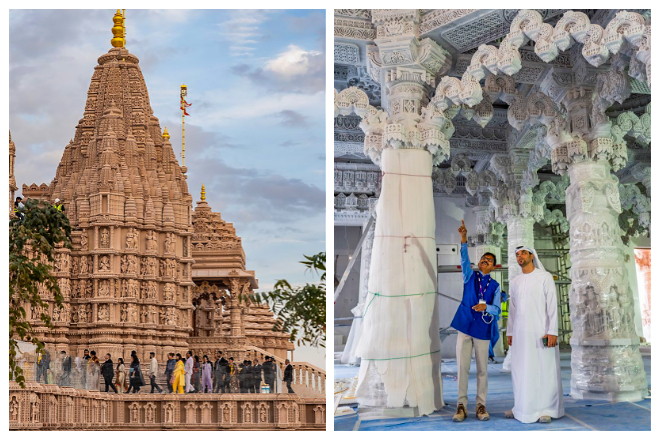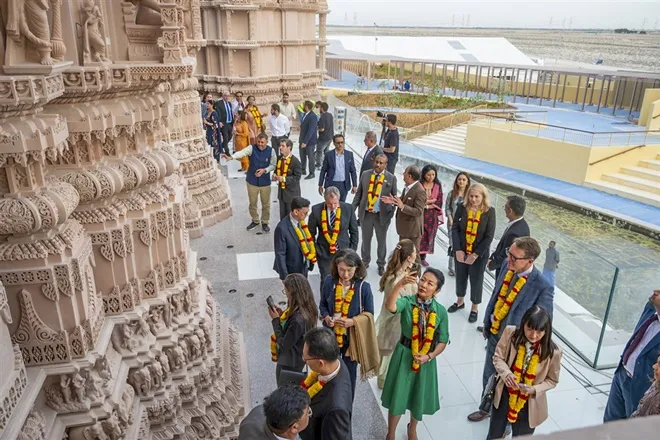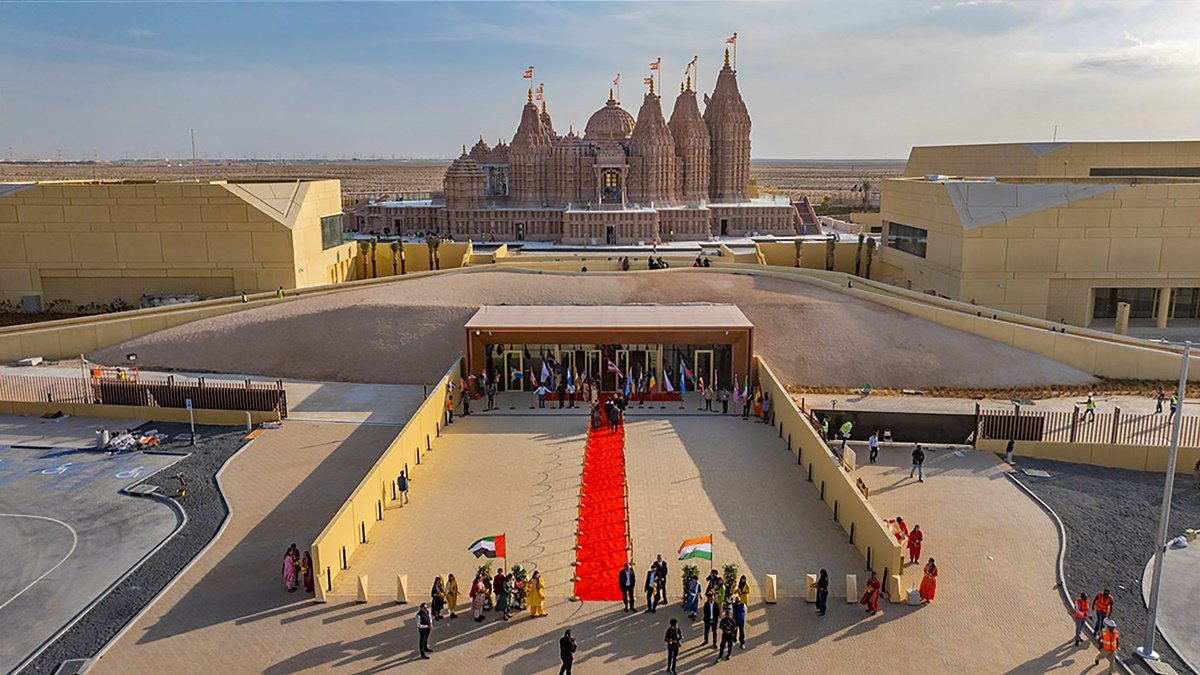The BAPS Hindu Temple in Abu Dhabi stands as a testament to intercultural harmony, symbolizing a remarkable achievement in the region. Prime Minister Narendra Modi is set to inaugurate the temple on February 14, marking a significant milestone as the first stone temple in the area and the largest in West Asia.
Ambassadorial Preview: Building Bridges Through Faith
Ambassador Sunjay Sudhir organized a preview of the temple for ambassadors and spouses from 42 countries. The completion of the temple, once deemed impossible, is now a reality, highlighting its global impact and recognition as a powerful agent of interfaith and intercultural harmony. The project has garnered gratitude from both UAE and Indian leadership.

Construction, Architecture, and Cost: A Grand Endeavor
Construction Budget and Design:
With a construction budget of Rs 700 crore, the BAPS Hindu Temple is poised to be the largest in West Asia. The meticulously designed façade features seven spires representing each Emirate of the UAE, standing as a symbol of unity.
Location and Strategic Placement:
The temple spans 27 acres in Abu Mureikhah, near Al Rahba along the Dubai–Abu Dhabi Sheikh Zayed Highway. The location was strategically chosen for its significance and accessibility.
Material Selection for Durability:
Pink sandstone from northern Rajasthan, known for its durability against extreme temperatures, was transported to Abu Dhabi for the temple’s construction. Italian marble adds an elegant touch to the structure.
Sustainability Initiatives:
An eco-conscious approach was taken, integrating fly ash into the concrete mix of the foundation to reduce the carbon footprint. The project stands out as the first Hindu traditional mandir to undergo comprehensive digital modeling and seismic simulation.
Impressive Dimensions and Architectural Elements:
The temple boasts dimensions of 32.92 meters in height, 79.86 meters in length, and 54.86 meters in width. Architectural elements include two ghumats, seven shikars, 12 samrans, and 402 pillars. The façade features over 25,000 pieces of stone with exquisite marble carvings.
Artistry and Symbolism:
Intricate carvings within each shikar depict stories from various Hindu scriptures, showcasing the rich cultural heritage. The ‘Dome of Harmony’ uniquely portrays the harmony of the five natural elements – earth, water, fire, air, and space.

Comprehensive Facilities: A Modern Spiritual Oasis
The complex includes a visitor center, prayer halls, exhibitions, learning areas, a children’s sports area, thematic gardens, water features, a food court, and a books and gift shop. The temple’s foundation incorporates 100 sensors, while over 350 sensors strategically placed throughout the structure continuously gather data on earthquake activity, temperature fluctuations, and pressure changes.
Innovation and Collaboration: A Landmark Achievement
The BAPS Hindu Temple in Abu Dhabi is not just a place of worship but a landmark achievement in sustainable infrastructure. It showcases the potential for religious spaces to become agents of positive change in the world, fostering community, sustainability, and interfaith understanding. As the temple awaits its official inauguration, it sets the stage for a future where cultural heritage and cutting-edge technology coexist in harmony.


